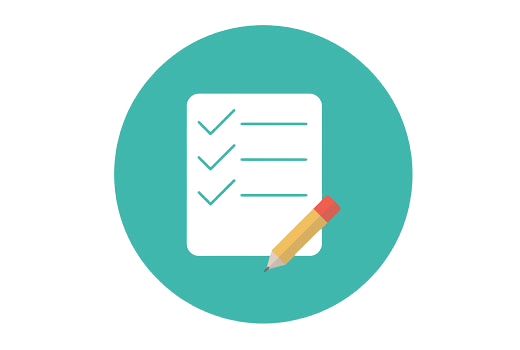Your Shopping Cart

Ace Tensorflow with EDTIA Deep Learning with TensorFlow 2.0 Certification Training and upskill your knowledge and technological skill.
The Deep Learning Course with TensorFlow Certification is created according to the latest requirements & demands. This Deep learning certification course will help you grasp widespread algorithms like CNN, RCNN, RNN, LSTM, RBM using the latest TensorFlow 2.0 package in Python. In this Deep Learning training, you will work on real-time projects like Emotion and Gender Detection, Auto Image Captioning using CNN and LSTM, etc.
TensorFlow is an end-to-end open-source medium for machine learning. It has a broad, adjustable ecosystem of tools, libraries and community resources that helps researchers push the state-of-the-art ML and developers fast create and deploy ML-powered applications.
This certification course is for: Developers aspiring to be a 'Data Scientist.' Analytics Managers Business Analysts Information Architects Analysts wanting to understand Data Science methodologies
TensorFlow is a software tool of Deep Learning. An artificial intelligence library allows developers to create large-scale multi-layered neural networks. It is used in Classification, Recognition, Perception, Discovering, Prediction, Creation, etc. Some primary use cases are Sound Recognition, Image recognition, etc.
The prerequisite for this course is are as follow: Basic programming knowledge in Python Concepts about Machine Learning Python for AI-ML Statistics and Machine Learning
According to research, 469 companies reportedly use TensorFlow in their tech stacks, including Uber, Delivery Hero, and Hepsiburada.
TensorFlow is More Favoured in the Job Market. Community Support of TensorFlow is Uncanny. TensorFlow Offers Many Supporting Technologies. TensorFlow 2.0 is Straightforward to Operate
Tensorflow software keeps modernizing and has fast development in the years to come. It is believed to be the future of Machine Learning Modelling. Many leading institutions use it for their research aspects, like Bloomberg, google, intel, deep mind, GE health care, eBay, etc.
you will learn the concepts of Deep Learning and how it varies from machine learning. This Deep Learning Certification course will inform you on executing the idea of the single-layer perceptron.
you will understand TensorFlow 2. x, install and validate TensorFlow 2. x by creating an Easy Neural Network to predict handwritten digits and operating Multi-Layer Perceptron to improvise the precision of the model.
Candidates will discover how and why CNN came into existence after MLP and learn about Convolutional Neural Network (CNN) by learning the theory behind how CNN is used to predict 'X' or 'O', use CNN VGG-16 using TensorFlow 2 and predict whether the given image is a 'cat' or a 'dog' and save and load a model's weight.
Learn the concept and working of RCNN, Transfer Learning, RCNN, Fast RCNN, RoI Pooling, Faster RCNN, and Mask RCNN.
You will discover what a Boltzmann Machine is and how it is implemented. You will also learn what an Autoencoder is, its various types, and how it works.
Learn what the generative adversarial model is and how it works by implementing step by step Generative Adversarial Network.
classify each emotion shown in the facial expression into different categories by developing a CNN model to recognize the images' facial expressions and predict the uploaded image's facial expression. During the project implementation, you will also use OpenCV and Haar Cascade File to check the emotion in real-time.
You will learn to distinguish between Feed Forward Network and Recurrent neural network (RNN) and understand how RNN works. You will also understand and learn about GRU and implement Sentiment Analysis using RNN and GRU.
In this section, you will learn the architecture of LSTM and the importance of gates in LSTM. You will also differentiate between the types of sequence-based models and finally increase the model's efficiency using BPTT.
Learn to implement Auto Image captioning using pre-trained model Inception V3 and LSTM for text processing.
Edtia Support Unit is available 24/7 to help with your queries during and after completing Deep Learning with TensorFlow 2.0 Certification Training.
In developing applications for this AI engine, coders can use C++ or Python, the most popular language among deep learning researchers.
The average TensorFlow developer salary is about $148,508 per annum.
To better understand TensorFlow, one must learn as per the curriculum.
Developers are charged with designing and training neural networks using the TensorFlow framework. With the help of interactive user interfaces, TensorFlow chatbots, OCR, ICR, DataFlow graphs, and extra complicated computations, TensorFlow developers design and manage the systems and applications.
Yes, machine learning is a good career path. According to a report, Machine Learning Engineer is the top job in salary, growth of postings, and public demand.
Creating ML models involves more than just knowing ML concepts—it requires coding to do the data management, parameter tuning, and parsing results needed to test and optimize your model.


Every certification training session is followed by a quiz to assess your course learning.

The Mock Tests Are Arranged To Help You Prepare For The Certification Examination.

A lifetime access to LMS is provided where presentations, quizzes, installation guides & class recordings are available.

A 24x7 online support team is available to resolve all your technical queries, through a ticket-based tracking system.

For our learners, we have a community forum that further facilitates learning through peer interaction and knowledge sharing.

Successfully complete your final course project and Edtia will provide you with a completion certification.
You will receive Edtia Deep Learning with TensorFlow 2.0Training certification on completing live online instructor-led classes. After completing the course module, you will receive the certificate.
A Deep Learning with TensorFlow 2.0Training certificate is a certification that verifies that the holder has the knowledge and skills required to work with Azure technology.
By enrolling in the Deep Learning with TensorFlow 2.0Training Certification course and completing the module, you can get Edtia Natural Language Processing with Python Certification.
Yes, Access to the course material will be available for a lifetime once you have enrolled in Edita Deep Learning with TensorFlow 2.0Training Certification Course.
